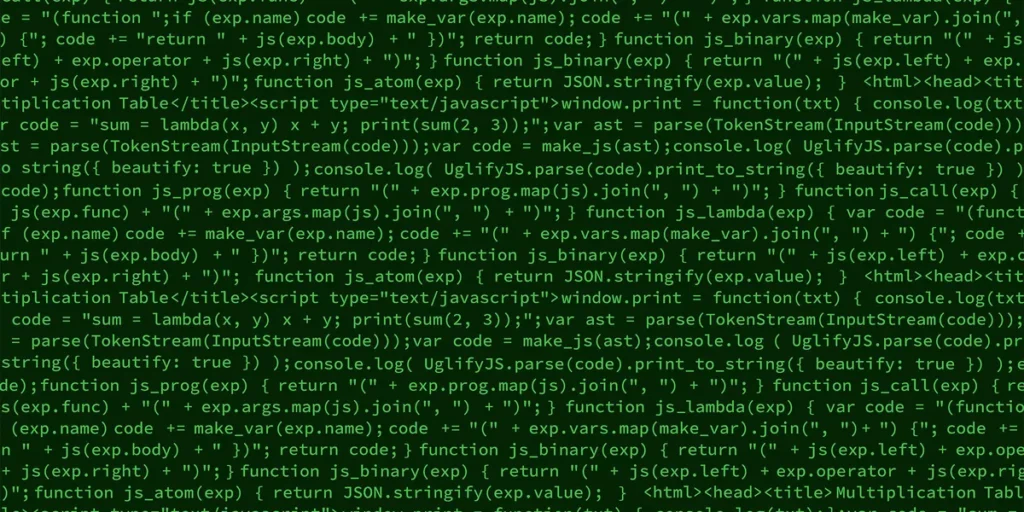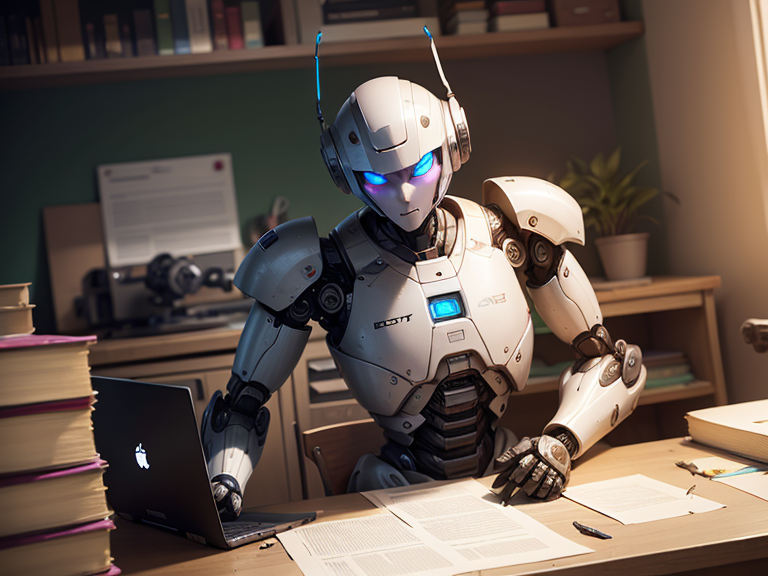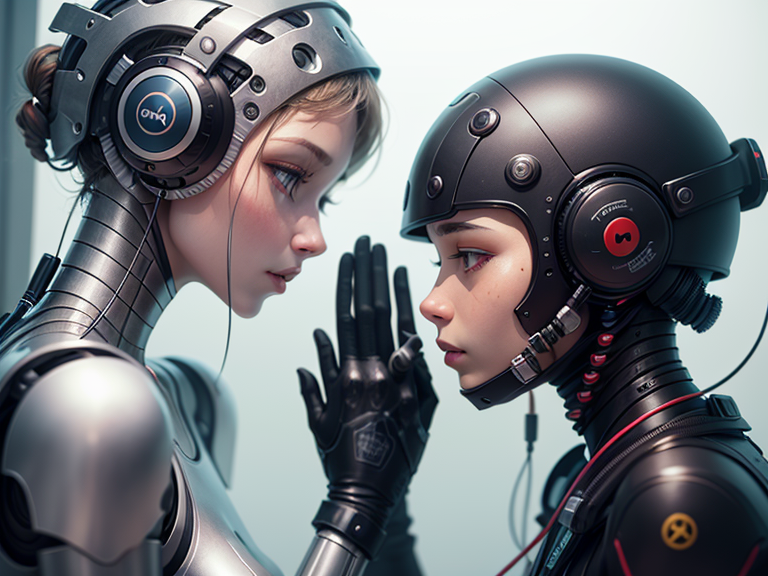The art of persuasion has been practiced since Ancient Greek and Roman times, with skilled wordsmiths honing their craft over centuries. But now a new factor threatens to fundamentally reshape how copy is created – artificial intelligence.
As AI copywriting tools gain the ability to analyze text data and generate written content, businesses are realizing the potential for faster scaling of content at lower costs. While AI systems still lack the nuance and creativity of human writers, they are putting pressure on copywriters to adapt and evolve.
So are we entering an era where algorithms achieve what Aristotle could only teach – or will AI merely serve as a helpful writing companion?
In this article, I’ll show you how AI can enhance your copywriting skills, and why you shouldn’t be afraid of it. I’ll also cover some of the drawbacks and challenges of using AI for copywriting, and how to overcome them. Finally, I’ll give you a glimpse into the future of AI-based copywriting, and what it means for you as a copywriter.
How AI copywriting works

AI copywriting tools use a combination of natural language processing, machine learning and neural network technologies to analyze text data and produce new written content.
Natural language processing (NLP) involves teaching computers to read, understand and derive meaning from human language. NLP algorithms parse language, identify key elements like subjects, verbs and objects, and extract entities, sentiments and key facts. This allows AI systems to “understand” raw text data to some degree.
Machine learning algorithms are trained on large data sets to identify patterns and make inferences without relying on explicit programming. AI copywriting tools use supervised machine learning, where they are fed thousands of examples of high-quality human-written copy.
The tools analyze the style, vocabulary, tone, sentence structure and other elements of this training data. They identify patterns that characterize successful writing for that domain and purpose. This allows the AI to learn the nuances of what makes certain kinds of copy work well.
Once trained, neural networks enable the AI to generate new text content that mimics the style and patterns learned from the training data. Neural networks mimic the neurons in the human brain, with layers that can process data inputs and assign weighted values to produce an output.
For AI copywriting, input data like a product name, description or keywords is processed through the neural network layers that have learned patterns from training examples. Through repeated adjustments of neural connections and weights, the network outputs new written content that emulates the training data in terms of style, quality and effectiveness.
While still rudimentary, these techniques allow AI systems to produce written content that can be useful – although AI outputs still require human intervention to ensure accuracy, appropriateness and impact.
Advantages of AI in Copywriting

There is no doubt that AI has some benefits for copywriters who want to improve their productivity and efficiency. Some of the advantages of using AI in copywriting are:
- Speed: AI can generate text faster than human copywriters. It can produce hundreds or thousands of words in a matter of seconds or minutes. This can save time and resources for copywriters who have to meet tight deadlines or handle large volumes of content.
- Variety: AI can generate text on any topic or niche. It can also produce different variations of text based on different parameters or criteria. This can help copywriters explore different angles and perspectives for their content. It can also help them avoid repetition or plagiarism issues.
- Creativity: AI can generate text that is original and unique. It can also generate text that is catchy and witty. It can use humor, metaphors, analogies, rhymes, alliterations and other literary devices to make the text more appealing and memorable. It can also use data, facts, statistics, quotes, and other sources to make the text more credible and authoritative.
- Optimization: AI can generate text that is optimized for various purposes and platforms. It can use keywords, phrases, tone, style, length, format, and other elements to make the text more suitable and effective for the intended audience and channel. It can also use analytics and feedback to improve the text over time.
However, AI is not perfect and has some limitations and drawbacks that copywriters should be aware of.
Disadvantages of AI in Copywriting

AI is not a magic bullet that can solve all the problems and challenges of copywriting. It has some disadvantages that can affect the quality and integrity of content. Some of the disadvantages of using AI in copywriting are:
- Accuracy: AI can generate text that is inaccurate or incorrect. It can make factual errors, grammatical errors, spelling errors, punctuation errors, or logical errors. It can also generate text that is irrelevant or inappropriate for the topic or context. This can damage the reputation and credibility of the content and the copywriter.
- Consistency: AI can generate text that is inconsistent or contradictory. It can change its tone, style, voice, or perspective throughout the text. It can also generate text that is inconsistent with the brand identity, values, or message of the content and the copywriter.
- Ethics: AI can generate text that is unethical or immoral. It can use biased, offensive, misleading, or deceptive language. It can also use personal or sensitive information without consent or disclosure. This can violate the rights and privacy of the content and the copywriter.
- Originality: AI can generate text that is unoriginal or derivative. It can use existing content or sources without proper attribution or citation. It can also use clichés, stereotypes, or tropes that are overused or outdated. This can reduce the creativity and uniqueness of the content and the copywriter.
These are some of the disadvantages of using AI in copywriting that can harm the quality and integrity of content. Therefore, copywriters should be careful and cautious when using AI in their work.
Impact on human copywriters and jobs

While AI copywriting tools will automate some routine content generation tasks currently performed by humans, they are unlikely to completely replace skilled copywriters anytime soon. AI tools will instead augment human capabilities, helping copywriters produce content faster, at scale and with greater consistency.
As AI systems continue to improve, many simpler copywriting tasks like product descriptions, blog posts and social media updates will be fully automated. But humans will still be needed for more conceptual and strategic writing like developing brand narratives, crafting compelling stories, and producing original creative content.
AI copywriting tools will especially assist junior copywriters by offering suitable language, examples and recommendations to get started quickly. However, experienced copywriters with strong conceptual abilities, nuanced language skills and creativity will remain valuable for oversight of AI outputs, refinement of AI-generated content, and development of higher-impact strategic copy.
Overall, AI and human copywriters are set to work in increasingly synergistic hybrid models where they collaborate to produce the best results. Copywriters will need to learn how to effectively utilize and oversee the work of AI tools. And AI systems will become more adept at working with human writers, suggesting options, analyzing performance and incorporating feedback into improved outputs.
To adapt to these changes, human copywriters will need to acquire new skills beyond just writing. These may include data analytics, machine learning basics, AI tool customization, and the ability to mentor and refine the work of AI systems. Copywriters who can communicate and collaborate with AI tools effectively while infusing creativity, strategy and nuanced thinking will remain highly valuable.
In the long term, new job roles may also emerge that blend the capabilities of humans and AI systems, with workers taking on responsibilities like training, advising and overseeing AI copywriting tools to ensure quality, ethics and alignment with business goals.
Current Trends in AI-Based Copywriting

AI-based copywriting is a rapidly evolving and expanding field that has many opportunities and challenges for copywriters. Some of the current trends in AI-based copywriting are:
- Collaboration: AI-based tools and platforms are becoming more collaborative and interactive. They allow copywriters to work with other copywriters, editors, designers, marketers, clients and other stakeholders in real-time. They also allow copywriters to give and receive feedback and suggestions from AI or human sources. This can help copywriters improve their skills and performance and create better content.
- Personalization: AI-based tools and platforms are becoming more personalized and customized. They allow copywriters to tailor their content to the specific needs and preferences of their target audience. They also allow copywriters to adjust their content to the specific goals and objectives of their project or campaign. This can help copywriters increase their relevance and effectiveness and create more engaging content.
- Automation: AI-based tools and platforms are becoming more automated and intelligent. They allow copywriters to automate some of the tedious and repetitive tasks of copywriting, such as research, editing, proofreading, formatting, etc. They also allow copywriters to delegate some of the complex and creative tasks of copywriting, such as brainstorming, generating, optimizing, etc. This can help copywriters save time and energy and focus on more strategic and valuable aspects of copywriting.
However, AI-based copywriting is not a static or stable field. It is constantly changing and developing with new technologies and innovations.
Future of AI Copywriting

The future of AI copywriting looks promising, with faster progress expected through access to more data, improved machine learning algorithms, and advancement in computational power. With continued improvements, AI systems will likely become better at creative and conceptual writing over time.
As AI tools analyze larger datasets that include more nuanced and creative human-generated content, they will gain a better understanding of stylistic elements like tone, humour and figurative language. Advances in natural language generation will help AI produce more creative and interesting content that grabs reader attention.
With more data to train on, AI will also improve its factual accuracy, grasp of context and ability to avoid logical errors and inconsistencies in generated text. As neural networks expand in depth and complexity, AI outputs will sound more fluid and human-like.
A key trend will be the rise of hybrid models where AI and human copywriters collaborate effectively instead of competing with each other. Functions will become more specialized within hybrid teams, with AI focusing on routine tasks at scale while humans drive creativity and strategy. Advanced AI tools will generate multiple options for human writers to choose from, focusing on assisting the creative process rather than replacing it entirely.
There are also ethical questions to consider regarding the responsible use of AI copywriting. Issues like bias in AI systems, transparency around how content is generated, and the impact on jobs must be addressed through governance frameworks, ethical guidelines and oversight mechanisms.
Ultimately, instead of displacing human copywriters entirely, AI tools are likely to augment their capabilities by handling mundane tasks, reducing workloads, offering new ideas and making strategic recommendations. The role of copywriters will evolve into higher-level functions of guiding, curating and improving the work of AI systems. But creative, conceptual and strategic thinking will remain fundamental human capabilities that cannot be replicated by today’s narrow AI.
AI an Existential Threat to Copywriters?

One of the most common and controversial questions that copywriters have about AI-based copywriting is whether AI will replace or eliminate human copywriters in the near or distant future.
This is a valid and important question that has no simple or definitive answer. There are many factors and variables that can influence the outcome and impact of AI on copywriting and copywriters.
Some of the factors and variables that can support the argument that AI will replace or eliminate human copywriters are:
- Capability: AI can perform some or most of the tasks and functions of copywriting better or faster than human copywriters. It can also perform some or most of the tasks and functions of copywriting that human copywriters cannot or will not perform.
- Cost: AI can reduce some or most of the costs and expenses of copywriting for businesses and clients. It can also reduce some or most of the risks and liabilities of copywriting for businesses and clients.
- Competition: AI can create some or most of the content that businesses and clients need or want. It can also create some or most of the content that businesses and clients prefer or choose.
However, there are also many factors and variables that can counter or challenge this argument.
- Emotion: AI cannot replicate or replace some or most of the emotional aspects of copywriting, such as empathy, humor, passion, etc. It also cannot replicate or replace some or most of the emotional aspects of content, such as tone, mood, personality, etc.
- Ethics: AI cannot adhere to or enforce some or most of the ethical principles and standards of copywriting, such as honesty, integrity, responsibility, etc. It also cannot adhere to or enforce some or most of the ethical principles and standards of content, such as accuracy, relevance, appropriateness, etc.
- Experience: AI cannot acquire or apply some or most of the experiential knowledge and wisdom of copywriting, such as intuition, judgment, insight, etc. It also cannot acquire or apply some or most of the experiential knowledge and wisdom of content
Therefore, it is difficult to predict or conclude whether AI will replace or eliminate human copywriters in the future.
Conclusion
To sum up, artificial intelligence is a powerful tool for copywriting that can help you create engaging, relevant and personalized content for your audience.
AI can also save you time, money and effort by automating tasks, generating ideas and optimizing your copy. However, AI is not a magic bullet that can replace human creativity and intuition. You still need to use your own skills and judgment to craft compelling stories, headlines and calls to action that resonate with your readers.
AI is here to assist you, not to replace you. So don’t be afraid of the machines, embrace them and use them to your advantage.
The future of copywriting is not AI or human.
It is AI and human.